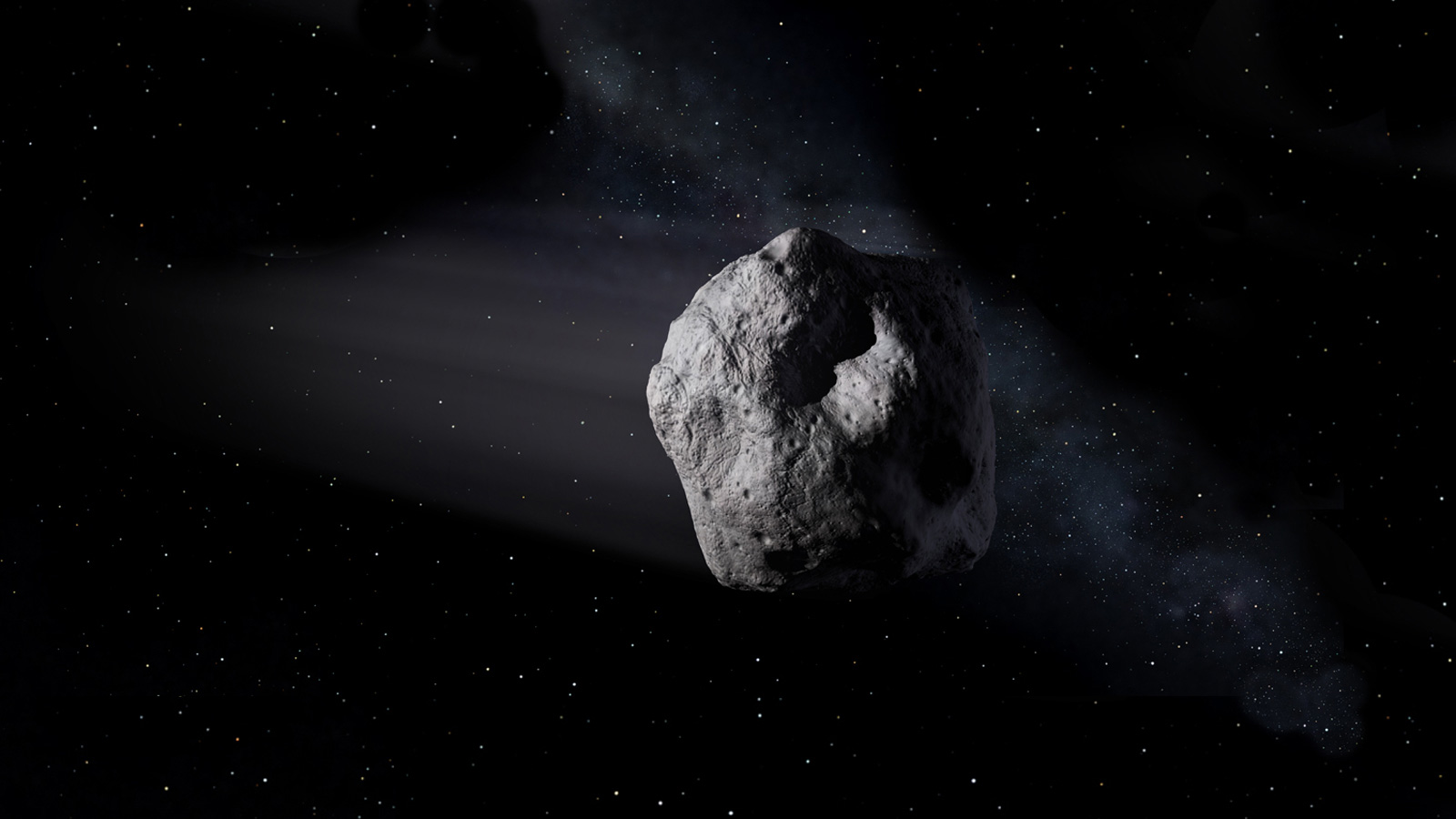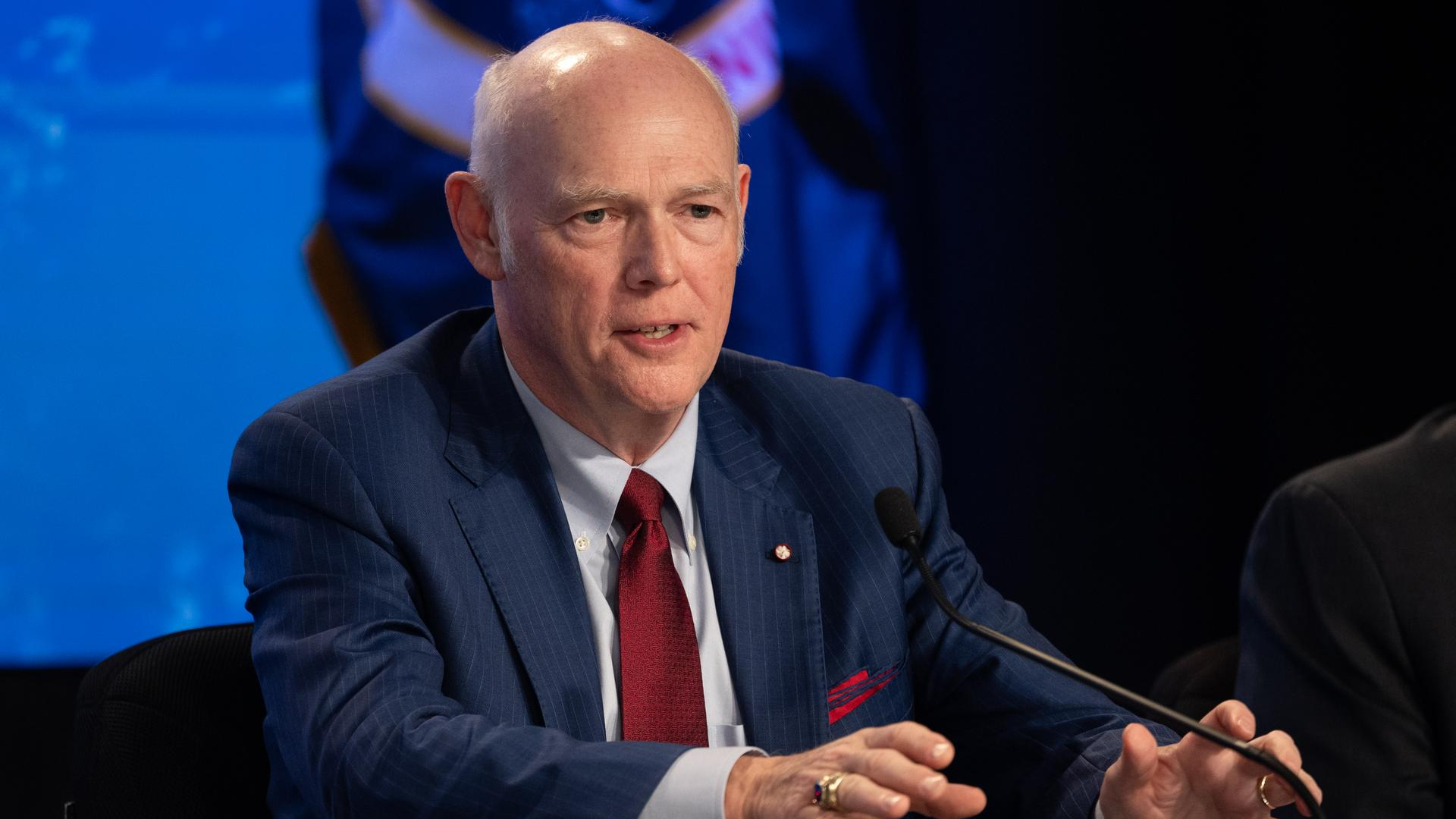NASA downgrades a large asteroid's risk of impact in 2880
Earthlings 800 years from now can breathe a little easier.

A fresh assessment of a distantly risky asteroid brings good news: it's even less of a threat than astronomers had feared.
The chances of an asteroid dubbed 1950 DA crashing into Earth were always tiny and long in the future: As of 2015, scientists had calculated that the object had a 1 in 8,000 chance of impacting Earth in the year 2880. But a new analysis released on Tuesday (March 29) knocks the asteroid out of the top spot of NASA's list of known asteroids that are most potentially hazardous to Earth.
"1950 DA should not be of any concern," Davide Farnocchia, a navigation engineer at NASA's Jet Propulsion Laboratory in California, told Space.com in an e-mail. "Rather, I'd say that it is encouraging that we can identify the remote possibility of an impact for this object more than 800 years in advance."
Related: If an asteroid really threatened the Earth, what would a planetary defense mission look like?
The space rock is 0.8 miles wide (1.3 kilometers), and scientists have a pretty good idea of its shape, thanks to observations by the the now-defunct Arecibo Observatory in Puerto Rico. Modeling previously suggested the asteroid is more rubble than rock, which would defuse any possible impact.
Fortunately, the new assessment says the asteroid poses even less risk than previously believed. "The probability of impact is tiny, 1 in 30,000," Farnocchia wrote of the asteroid, a substantial improvement from the previous odds. "But even in the very unlikely case that 1950 DA were on an impact trajectory, the possible impact is in 2880 and that provides plenty of time for mitigation," he added.
NASA's mandate includes seeking out and monitoring asteroids like 1950 DA through partner telescopes and space observations, coordinated through the agency's Planetary Defense Coordination Office. There are no impending threats to worry about now, but NASA periodically revisits old assessments to make sure they are accurate.
Breaking space news, the latest updates on rocket launches, skywatching events and more!
In January, the agency upgraded its Sentry system for examining asteroid risk. Among the notable changes were better predictions for the Yarkovsky effect, or alterations to an asteroid's path in space due to heating from the sun.
The effect has a particularly strong influence on the orbit of 1950 DA, and for years, NASA had been calculating asteroid trajectories using a 2002 program called Sentry that couldn't factor in the Yarkovsky effect.
Instead, Farnocchia and his colleagues would have to simulate a large number of scenarios in what he called "a somewhat brute force approach." Then, the scientists had to analyze the results directly to identify possible impacts and probabilities.
So when scientists got new observations of 1950 DA, they didn't bother re-running the impact risks.
However, the new system, called Sentry-II, can account for the Yarkovsky effect, allowing it to automatically calculate impact risks without all the extra work, so 1950 DA got its first new assessment since 2015. The new analysis with Sentry-II only took a few hours, and was processed automatically, and will be repeated more regularly.
The lower risk assessment moved 1950 DA to second place on NASA's watch-list. Now in the top spot goes to Bennu, the asteroid that NASA's OSIRIS-REx mission sampled in October 2020. The spacecraft will deliver its samples to 2023, giving scientists a detailed look at the rock and, not coincidentally, helping them assess whether the asteroid poses any threat for a window opening in the year 2178.
Editor's note: This story was updated to correct a typo in one instance of 1950 DA. Reporting contributed by Space.com senior writer Meghan Bartels. Follow Elizabeth Howell on Twitter @howellspace. Follow us on Twitter @Spacedotcom and on Facebook.

Elizabeth Howell (she/her), Ph.D., was a staff writer in the spaceflight channel between 2022 and 2024 specializing in Canadian space news. She was contributing writer for Space.com for 10 years from 2012 to 2024. Elizabeth's reporting includes multiple exclusives with the White House, leading world coverage about a lost-and-found space tomato on the International Space Station, witnessing five human spaceflight launches on two continents, flying parabolic, working inside a spacesuit, and participating in a simulated Mars mission. Her latest book, "Why Am I Taller?" (ECW Press, 2022) is co-written with astronaut Dave Williams.

